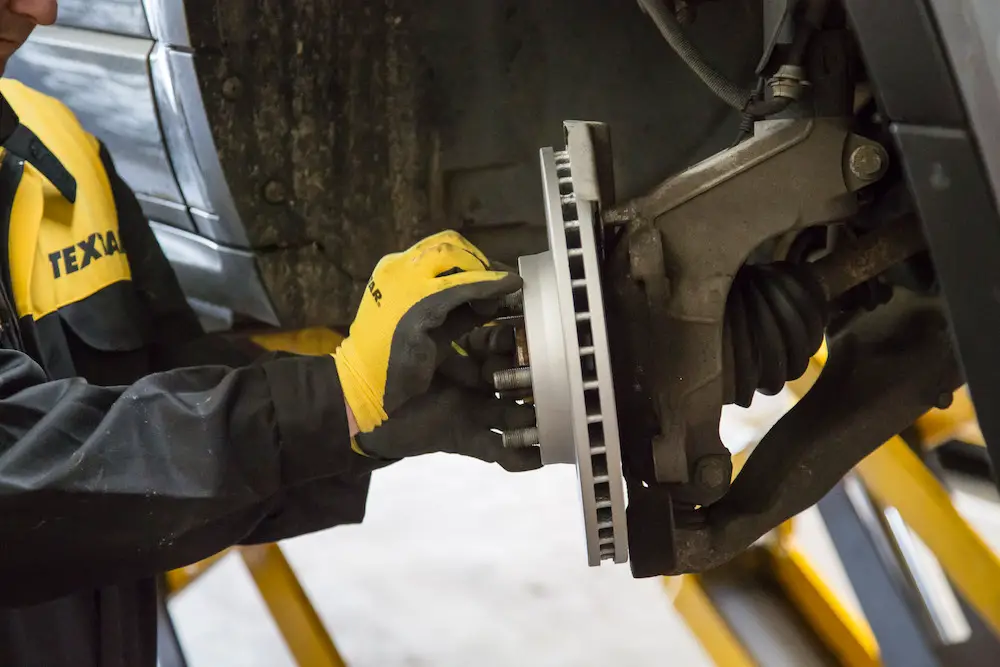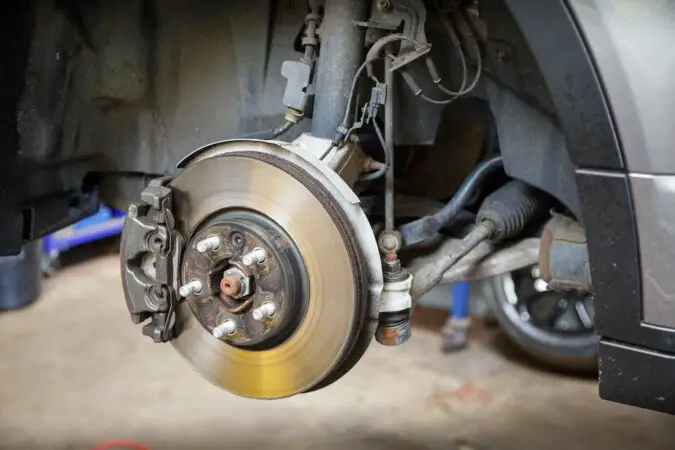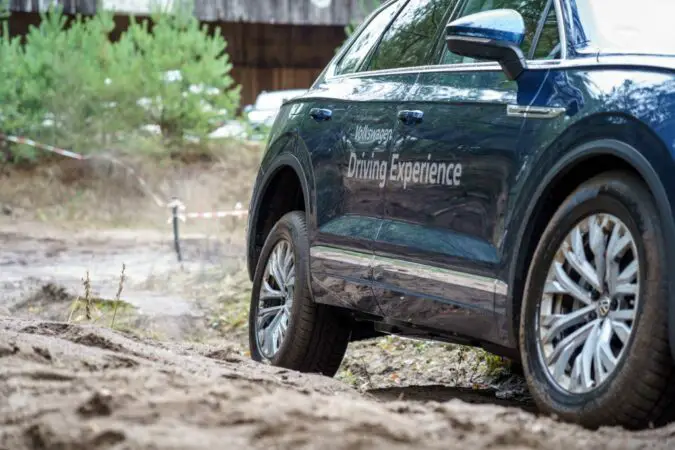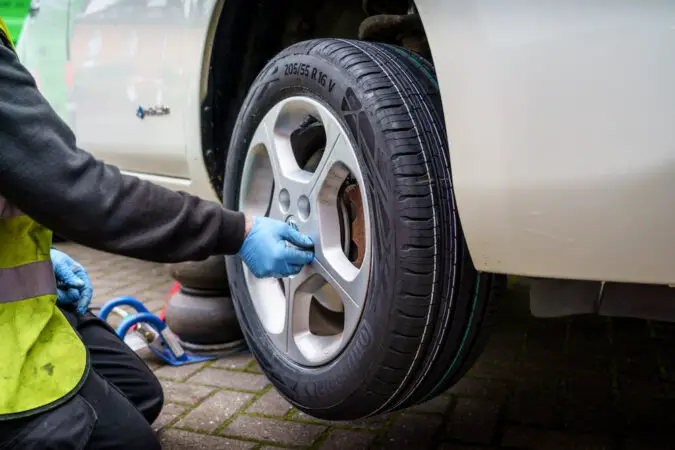Have you started experiencing some weird symptoms such as clunking noises coming from the front suspension? These noises might be caused by a worn-out control arm bushing. If you suspect that, then you are at the right place because there will be a lot to cover on this topic.
Having a problem like this can be a really frustrating thing to deal with. Why I’m saying this? Well, because it is true, the control arm bushings will basically impair you from driving your car as it should be driven. When some of these bushings fail, you will start to experience weird symptoms that will ruin the driving experience.
Not to mention that driving like this with bad control arm bushings is dangerous for you as well as for the passengers in your car. Your car will not behave as it did when these bushings were in good condition and you might face some loose steering and lack of response from the car. This is dangerous for you. This is why you need to learn everything when it comes to this problem and how to overcome it. And we are going to help you out.
First, we are going to cover the basics and learn what is a control arm bushing. Then we will cover the types as well as the causes and symptoms of a worn-out control arm bushing. After we will cover the diagnostic process and how to replace them with a simple tool. Lastly, we will cover the cost as well as some frequently asked questions.
What Are Control Arm Bushings?
Now before we dive into more complex topics like the types of control arm bushings and the bad control arm bushing symptoms, let’s cover some of the basics and learn more about what bushings are in general terms and understand how they work. If you like you can jump to the next chapters, if not, keep up with us for a bit.
Control arm bushing is a simple component that acts as a buffer zone between the control arm and the frame of the car.
These components are manufactured out of rubber. Their prime goal is to absorb the impacts and vibrations. And stop them from going through the whole chassis.
If there were no bushings on the control arms, you will feel a lot of stress and vibrations. There will be no comfort while driving a car. You will feel like you are driving an agricultural machine. This is why bushings were invented, so you don’t feel that way.
But if they break, you will start to feel like you are driving a tractor. But more on the symptoms later on. What is important for you is to learn the types of control arm bushing and see which of these types of bushings you have in your car.
Types Of Control Arm Bushings
Now as we learned what are control arm bushings, let’s cover the different types of these components. As you probably know, there is more than one type of bushings on your suspension.
In the following few chapters, we are going to cover all these types and learn more about the differences when it comes to the location of these bushings and where they could be found on your vehicle. So, let’s begin discussing.
Lower Control Arm Bushing
The first and probably most common is the lower control arm bushing. Not all cars have an upper control arm. But all of them have lower control arms.
In fact, there are two lower control arms in the front end of every vehicle. So, two control arms, times two bushings per side, equals four bushings in total.
When it comes to lower control arm bushing, that is all you need to know. These control arms are bolted onto the chassis of the car on one side, and on the other, they are bolted onto the knuckle through a component known as the control arm ball joint.
Upper Control Arm Bushing
When it comes to the upper control arms, you basically deal with the same situation. There is an upper control arm and an upper control arm bushing. Two bushings per arm.
What is different though, is that modern vehicles do not have upper and lower arms. They only include the lower one. Mostly because there is a need to have one.
Trucks still have an upper and a lower arm. So, if you have a pickup, then you will highly likely have a configuration such as this with an upper and lower arm. Now let’s move to the last type.
Rear Control Arm Bushing
And the last type that we are going to cover is the rear control arm bushing. Modern cars include independent rear suspension. This rear suspension is not a rigid axle with a leaf spring suspension. But it is highly versatile, especially with these rear control arms.
Nowadays most cars include a rear control arm bushing. In fact, each arm has two of these bushings, similar to the lower and upper control arms that are mounted at the front of the car. Now as we cleared all the types of bushings, let’s now focus on the causes of why they fail.
Causes Why Control Arm Bushing Fails
Now let’s discuss why the bushings on the control arms are failing at a great pace. What makes them so vulnerable and prone to failure?
Knowing this will help you when it comes to preventing situations like these when the bushings fail completely and cause you a lot of trouble along the way. So, what are the causes? Let’s elaborate on them in detail.
1. Worn Control Arm Bushing
The first type of cause why the bushings fail is wear and tear. As you probably know, our cars during their lifetime are put under a lot of stress.
A worn control arm bushing is a completely normal thing nowadays because, after years of use and abuse, these components wear out and cause a lot of trouble.
They can dry out and not deliver the right performance that is required from them. And if you want to keep your car driving well, everything has to be in check and proper working order if you want to avoid some of the bad control arm symptoms that we are going to cover later on in the article. Now let’s move on to the next cause.
2. Broken Control Arm Bushing
The second most probable cause is a broken control arm bushing. As you probably know, bushings are rubber components.
This rubber during long use and abuse tends to dry out and cause crackings in the bushing. And as time progresses, these cracks could become bigger and bigger. So, you could easily end up with a broken control arm bushing.
In the last stages, the bushing will simply disintegrate and there will be a lot of play between the bushing and the control arm. The metal will rub against metal and you will have bad control arm bushing symptoms.
3. Loose Bushing
The third cause for this problem is the loose bushing. The bushing itself could get loose if it dries out. As we explained, the rubber dries out and these components shrink in size sometimes.
The more the bushing shrinks, the more play will be developed inside of the bushing. The more play, the more symptoms, and other noises will develop.
There will be certainly some bad symptoms that will be noted. But more on the bad control arm bushing symptoms later on in the article. Now let’s cover the last probable cause for the car ending up with bad bushings.
4. Driving The Car Too Often Off-Road
And the last cause that we would love to cover when it comes to controlling arm bushings is the situation when the car is driven off-road.
If you live in an area that has a lot of potholes, or you are driving a lot on back roads. Then it is highly likely that you will have trouble with your bushings sooner or later.
All this uneven road surface is creating vibrations. And these vibrations are damaging to the bushings. If your average bushing will last 100,000 miles or 5 to 10 years, driving on a surface like this could trash these components literally after 30,000 miles or so.
Maybe even less, depending on the style of driving you are having. This is why this is one of the most common causes for these components failing and causing you a lot of trouble.
When you have problems like this you will face a lot of bad control arm bushing symptoms. And in the following chapters, we are going to cover precisely that.
Bad Control Arm Bushing Symptoms
Now as we cleared the types of bushings and the causes why these components fail, let’s now focus on the bad control arm bushing symptoms.
As you probably know, with all components when they fail they start to develop symptoms. Some of the symptoms make it very easy to tell that the bushings are shot, while some of the symptoms are more misguiding let’s say.
Still, you will need to do a diagnostics. But more on that later on, let’s first cover the symptoms.
1. Clunking Noises
Now let’s get into the bad control arm bushing symptoms. The first symptom that we would want to discuss is the clunking noise that develops whenever there is a problem with these components.
This noise is often occurring because there is play inside of the control arm. Meaning that between the bushing and the arm has some free space. Which should not be the case.
So, consequently to this, when the car goes over bumps you will start to experience weird noises. Namely, clunking noises, but these noises can be even more extreme and you will notice something like a metal rubbing metal sound.
This is a clear giveaway that you have a problem with your suspension and this situation needs checking. How you can diagnose a problem like this we are going to cover later in this article. Now let’s continue with the other symptoms and learn more about them.
2. Vibrations Inside Of The Cabin
The second most common in the bad control arm bushing symptoms list is the situation with the vibrations inside of the cabin.
As you probably know, the bushings are there to keep the vibrations out. They are rubber components that are designed to absorb impacts and improve our comfort.
Whenever these components are worn out and do not deliver what they should, your driving experience will be impacted.
Vibrations, especially through the steering wheel will be a very common thing. Everything will start to rattle. Whenever you have a problem with vibrations, make sure that you check these bushings and ball joints. These are the components that most often cause these issues. Now let’s move to the next symptom.
3. Steering Wheel Not Straight
Another common symptom that we decided to add to our list of bad control arm bushing symptoms is the one when the steering wheel is not straight.
Whenever you have a problem with your suspension, especially something this crucial like the bushings that can develop a ton of play. You will notice how the steering wheel will not be straight.
This situation is not good for you. You will constantly need to adjust the steering wheel and the steering wheel can overall become really unpredictable.
This is why whenever you notice something like this means that something is messing with the wheel alignment of your car. There could be a lot of things that could cause this, but sometimes, even bad bushing can make you feel this discomfort.
That’s why you need to address the issue accordingly if you don’t want to have any problems in the future with the steering wheel. But how you can diagnose it? Well, that’s what we are going to cover in a bit. Let’s first learn more about the last symptom.
4. Car Is Unstable Under Braking
The last in our list of bad control arm bushing symptoms is the situation when the car gets unstable under braking. So, why is this the case? Why the car gets unstable?
Well, the control arms are the ones that are holding the wheels in place. So, imagine that there is play in these components.
This play will cause the wheels to move to different places under stress. You brake hard and one wheel goes straight and one of them goes in a different direction. So, the car simply doesn’t listen to you and you could end up in a ditch if you brake hard.
This is why you need to learn how to diagnose bad bushing. But how you can do this process? Well, that’s what we are going to cover in the following chapter.
How To Diagnose These Bushings
Now as we covered all of the bad control arm bushing symptoms. Let’s now focus on other matters. Namely the diagnosing process. How you can tell if your bushings are shot and need replacement?
Frankly, you can do this even without inspection. If the car is older than 10 years and has over 100,000 miles and these components have never been touched, then of course you need to replace these components and make sure that you drive safely.
But if you want to replace only a certain bushing that is making a problem, you will need to dive deeper and get your hands dirty.
Your best bet would be to lift the car in the air and then remove the wheel. Make sure that your car is nice and secure.
Then check the condition of the bushings. If they have leaks of oil around them it means that the fluid inside of them has leaked out. This is a clear sign that these need replacing.
Also, inspect the rubber for cracks, if there are cracks, then you will have to replace them. Also if they are destroyed then understandably you will have to replace them as well. But how you can perform a control arm bushing replacement? Well, that’s what we are going to cover next.
Control Arm Bushing Replacement
Now let’s discuss control arm bushing replacement. Replacing these bushings is a very smart move if you want to save some money.
Nowadays people just go out there and grab new control arms and call it a day. But why replace them completely when you can only remove the bushing.
It might be more difficult, but the end result is more rewarding than doing the whole thing. You will feel like you achieved something big and frankly, removing these components from the arm is a real pain if you don’t have the right tools. Next, we are going to cover what tools you will be needing.
Control Arm Bushing Tool
Now let’s cover what tools you will be needing. For this job, you will need new bushings of course. Two wrenches to remove the control arm and a control arm bushing tool.
These tools are really simple tools that work as a press. You put the control arm bushing into the tool and then press it really well.
You can purchase these tools out there on Amazon. In fact, we have our favorite tool that we have been working with. And frankly, it is one of the best out there, it will work well for both upper and lower bushings.
Replacing Control Arm Bushing
When it comes to replacing the control arm bushing, the first thing you will need is to jack the car in the air and remove the wheel.
The next thing you will need to do will be to remove the control arm from the car. For the ball joint, you will need a bit of persuasion with a hammer. Then after the control arm is off, just unbolt the bolts of the control arm and the whole arm will pop off.
Then use this tool to remove the bushings. Compress them and they will get out of your way easily. Then when applying the new control arm bushings, use a lot of grease. Compress them and they will slide in easily.
After you are done and your control arms look good, assemble everything back together and you will be good to go.
Cost To Replace The Bushings
The cost to replace these control arm bushings really depends much on whether you want to do the bushings or the whole control arm unit.
The bushings are less than $20 each, a new control arm on the other hand is about $100. Sometimes it could be found for less.
The tool is also costly, but you can rent it from your local parts store if you want to do so. Overall, it is not an expensive thing to do. The only thing you need is patience and will.
Conclusion
In this article, we covered quite a bit when it comes to these control arm bushings. We learned the basics of what they are and what are the different types of bushings.
We learned also the causes of this problem which are age and miles in most cases. Then we covered the symptoms which include the clunking noise and the vibrations inside the cabin.
Lastly, we covered the replacement process as well as the tools you be needing to perform this work.
F.A.Q
Now let’s answer some frequently asked questions.
What Is A Control Arm Bushing
A control arm bushing is a cylindrically shaped rubber component that sits between the control arm and the frame of the car. This component is crucial when it comes to the reduction of vibrations and improving the comfort inside of the cabin.
Control Arm Bushing What Does It Do
The bushing has two roles. The first role involves reduction of the vibrations inside the cabin and improving the driver’s comfort. While the second role involves the reduction of the wear and tear of the components. The bushing basically acts as a buffer between two metal components. Thus, helping in avoiding metal friction.
How To Remove Lower Control Arm Bushing
Removing a bushing is not as easy as you think. For this, you will need a special tool or a press to compress the bushing and remove it from the control arm. If you don’t have a press, this will be a very difficult task to do. This is why you will need either to rent one or purchase one to get the job done the right way.





